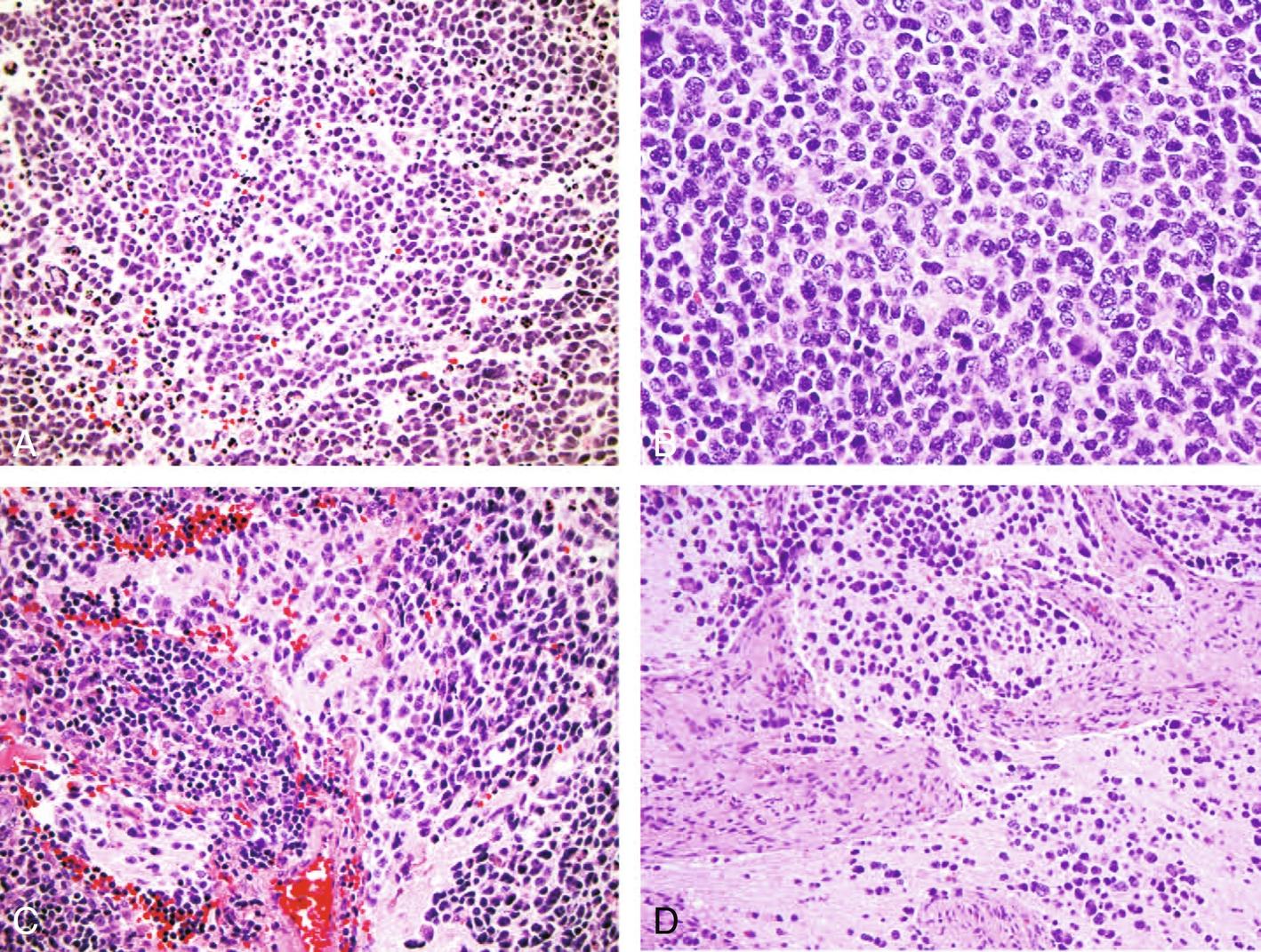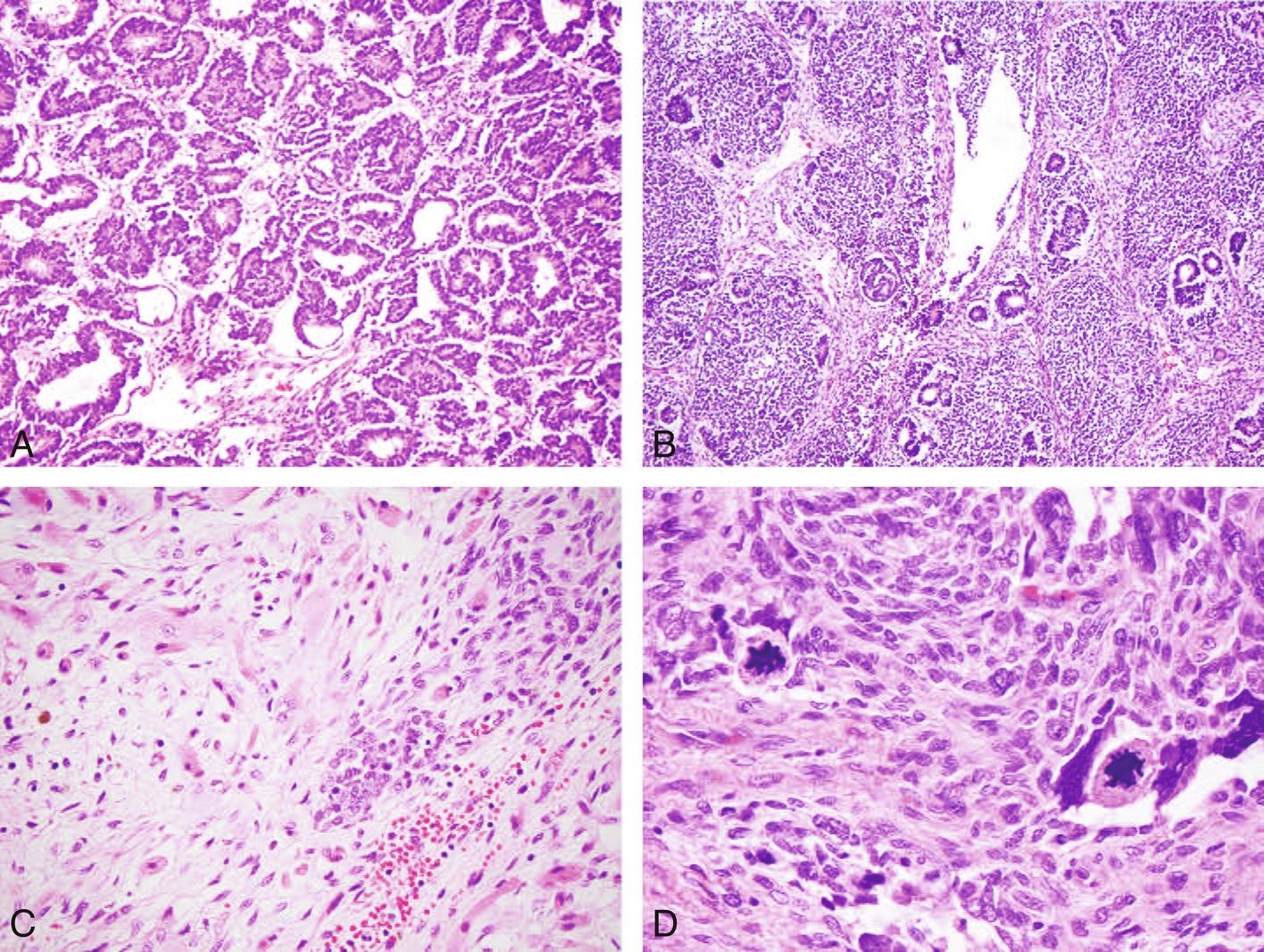Physical Address
304 North Cardinal St.
Dorchester Center, MA 02124
Neuroblastoma (NB) is the most prevalent pediatric sarcoma characterized by a significant heterogeneity affecting the tumor behavior and prognosis. The tumor originates from a subset of nerve crest cells programmed to differentiate toward sympathetic ganglia and adrenal medulla. NB belongs to the group of neuroblastic tumors that show a spectrum of differentiation reflected by variable proportions of its cellular and stromal components, which include:
Immature neurons (neuroblasts) at different stages of their differentiation
A specific fibrillary matrix (neuropil) produced by differentiating neuroblasts
A specialized glial tissue (Schwannian stroma), which supports growing neuroblasts
NBs are Schwannian-stroma poor tumors composed of more than 50% of neuroblasts and less than 50% of Schwannian stroma. The International Histology Neuroblastoma Classification (the Shimada system) provides criteria distinguishing favorable and unfavorable histology and is based on three factors:
Degree of neuroblastic differentiation accompanied by accumulation of neuropil
Mitotic activity and tumor apoptosis reflected by mitotic-karyorrhectic index (MKI)
Patient’s age at diagnosis
Accordingly, NB is subclassified into three categories:
Undifferentiated (tumors composed of undifferentiated neuroblasts and lacking neuropil)
Poorly differentiated (tumors containing no more than 5% of differentiating neuroblasts producing neuropil)
Differentiating (tumors containing more than 5% of differentiating neuroblasts, differentiated ganglion cells, and abundant neuropil)
MKI is defined as a cumulative number of mitotic and apoptotic figures counted in 5000 tumor cells under the microscope. MKI of less than 100 per 5000 cells (or 2%) is low, 100 to 200 per 5000 cells (or 2%–4 %) is intermediate, and more than 200 per 5000 cells (or 4%) is high.
Favorable histology NBs are diagnosed in patients younger than 5 years if they show signs of neuroblastic differentiation and low or intermediate MKI. Thus all differentiating tumors with low or intermediate MKI are favorable and all undifferentiated tumors with high MKI are unfavorable. However, in patients younger than 18 months at diagnosis, undifferentiated and poorly differentiating tumors with low or intermediate MKI are also favorable. In patients older than 18 months at diagnosis, undifferentiated and poorly differentiated tumors are unfavorable regardless of MKI.
Histology of all NBs (Schwannian-stroma poor tumors) is unfavorable in patients older than 5 years. All Schwannian-stroma rich or dominant neuroblastic tumors called ganglioneuroblastoma and ganglioneuroma, respectively, are favorable regardless of age.
Examples of favorable and unfavorable histology in neuroblastoma are presented in Figure 22.1 .

Wilms tumor (nephroblastoma) recapitulates renal development and consists of different proportions of epithelial and stromal elements and undifferentiated blastema ( Figure 22.2A–C ). Diffuse anaplasia is the key feature that distinguishes favorable and unfavorable histology (see Figure 22.2D ).

Generally, the term “anaplasia” implies an extreme de-differentiation of tumor cells and is used arbitrarily; however, because of its prognostic significance, it is strictly defined in nephroblastoma. This definition includes cellular gigantism (cells 3-to-4 times larger than their neighbors) and, most importantly, atypical (asymmetrical) mitotic figures.
Biologically, anaplasia reflects extreme polyploidy and aneuploidy of tumor cells resulting from chromosomal instability because of genetic alterations of important cell cycle check points, such as TP53. Anaplasia is usually seen in the blastemal component; however, stromal anaplasia is also known.
Originally, anaplasia in Wilms tumor was described as focal and diffuse and both types were considered unfavorable in the early treatment protocols. Further analysis, however, showed that some isolated stage 1 Wilms tumors with anaplasia behaved similarly to their favorable counterparts without anaplasia, which led to reevaluation of the criteria and significance of focal anaplasia. Currently, focal anaplasia is defined, using both quantitative and topographical parameters, as anaplastic nuclear changes confined to one or several discrete foci of primary tumor located within boundaries of a tumor section on a slide without anaplasia or cellular unrest in the surrounding tumor and, most importantly, extrarenal sites (renal sinus, vessels, renal/tumor capsule, or metastases).
Focal anaplasia does not mean unfavorable histology; however, histological evaluation of the entire primary tumor and metastases (if any) are necessary to confirm that the observed anaplasia is focal. Thus anaplasia observed in a random tumor biopsy does not meet definitions of focal and is considered diffuse.
It is thought that anaplasia is the predictor of tumor responsiveness to therapy rather than the marker of innate tumor aggressiveness and Wilms tumors with diffuse anaplasia are characterized by poor therapeutic response and, thus, poor prognosis.
Become a Clinical Tree membership for Full access and enjoy Unlimited articles
If you are a member. Log in here